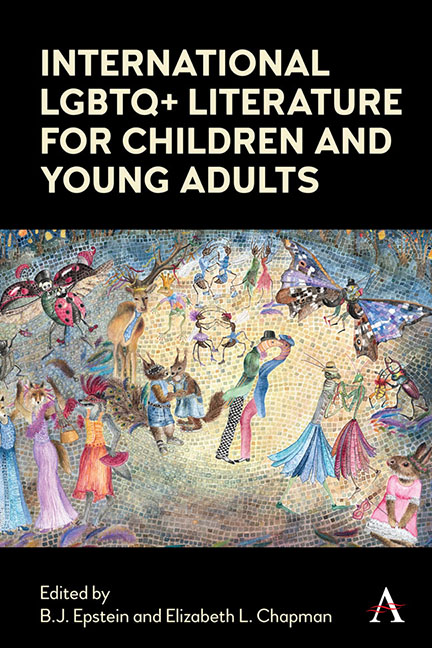Book contents
- Frontmatter
- Dedication
- Contents
- List of Illustrations
- Acknowledgements
- Notes on contributors
- Introduction
- BRAZIL
- FRANCE
- GERMANY/ AUSTRIA
- GREENLAND
- INDIA
- INDIGENOUS WRITING
- ITALY
- MULTINATIONAL
- MULTINATIONAL
- MULTINATIONAL
- THE PHILIPPINES
- SLOVENIA
- SOUTH KOREA
- SPAIN
- SWEDEN
- SWEDEN
- List of Primary Texts
- Index
Chapter Fifteen - ‘I’m Sure This Whole Boy Thing is Just a Phase’: Transgender Narratives in Contemporary Swedish Children’s and Young Adult Literature
Published online by Cambridge University Press: 18 November 2021
- Frontmatter
- Dedication
- Contents
- List of Illustrations
- Acknowledgements
- Notes on contributors
- Introduction
- BRAZIL
- FRANCE
- GERMANY/ AUSTRIA
- GREENLAND
- INDIA
- INDIGENOUS WRITING
- ITALY
- MULTINATIONAL
- MULTINATIONAL
- MULTINATIONAL
- THE PHILIPPINES
- SLOVENIA
- SOUTH KOREA
- SPAIN
- SWEDEN
- SWEDEN
- List of Primary Texts
- Index
Summary
Introduction
In 2013, Swedish author and illustrator Elias S. Ericson published the graphic novel Åror (Oars), depicting the life of a transgender character in his late teens. When the Swedish Institute for Children's Books mentioned this book in its annual report on themes and tendencies in Swedish children's and young adult books, it was the first time that a transgender character was observed in literature for young readers in Swedish (Svenska barnboksinstitutet 2014, 8, 19). The reports, produced since 1993, show an increase in the number of depictions of transgender characters starting in 2015, which means that transgender characters have, with few exceptions, only been made visible in Swedish children's and young adult literature during the last few years. From an international point of view this can be considered rather late (cf. overviews in, for example, Butler 2020; Epstein 2013, 142–55; Jenkins and Cart 2018, 161–80). Anglo-American films and young adult novels about transgender experiences such as Boys Don't Cry (1999), directed by Kimberly Pierce, and Julie Anne Peters’ Luna (2004) show that, though usually progressive and attentive to norms, Swedish children's and young adult book authors had a late awakening when it comes to the portrayal of transgender characters. From 2013 and up until the time of writing, about 25 books for children and young adults with a transgender protagonist have been published in Swedish, translations and Swedish originals both included. To this can be added an equally large number of books where transgender characters are depicted as subsidiary characters (cf. Svenska barnboksinstitutet 2016, 13–14; 2017, 6; 2018, 8–9; 2020, 8; and Warnqvist 2017).
In this chapter, I wish to address the late appearance of transgender characters in Swedish children's and young adult literature. I will uncover possible reasons both for this late appearance and for the increased number of depictions following it. I begin by giving an overview of the legal situation for transgender people in Sweden, as necessary background for the discussion that follows.
- Type
- Chapter
- Information
- International LGBTQ+ Literature for Children and Young Adults , pp. 275 - 302Publisher: Anthem PressPrint publication year: 2021

